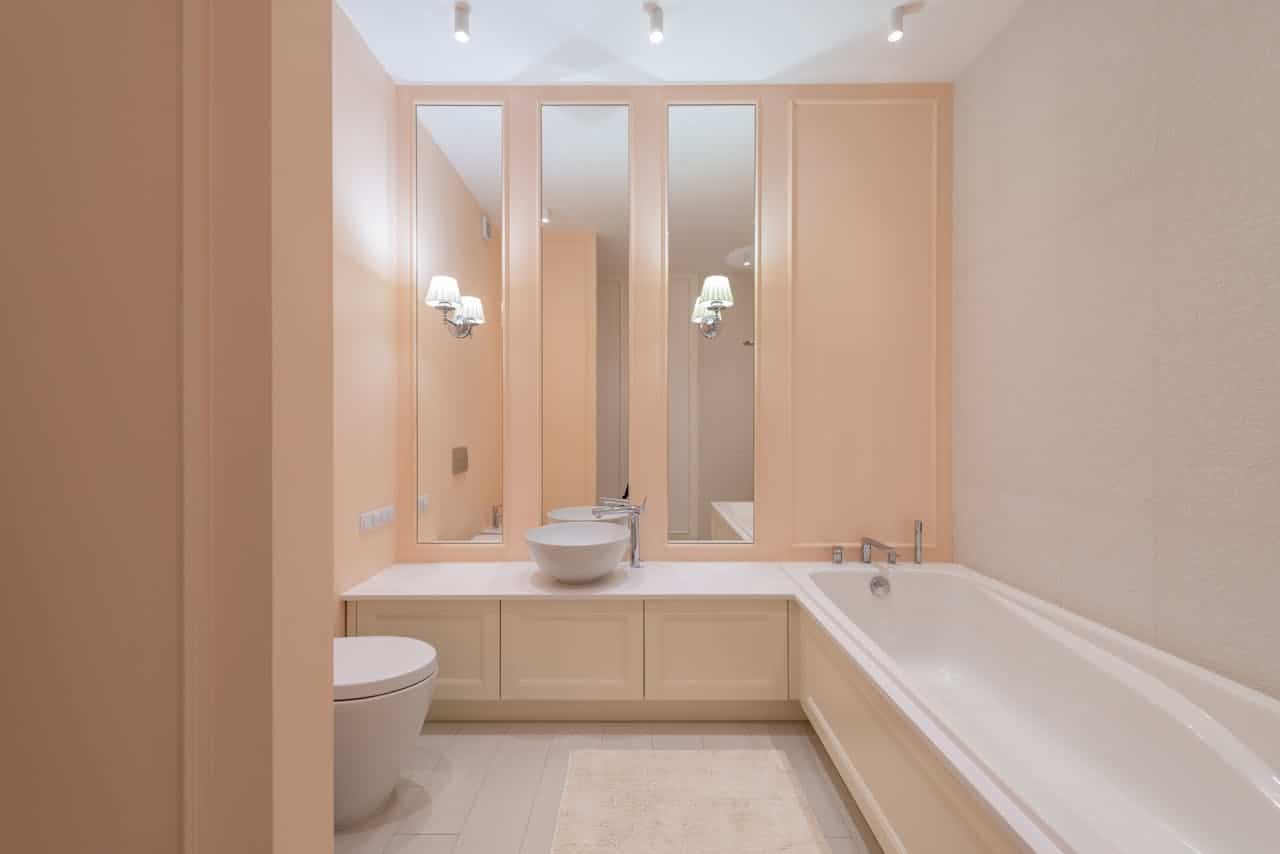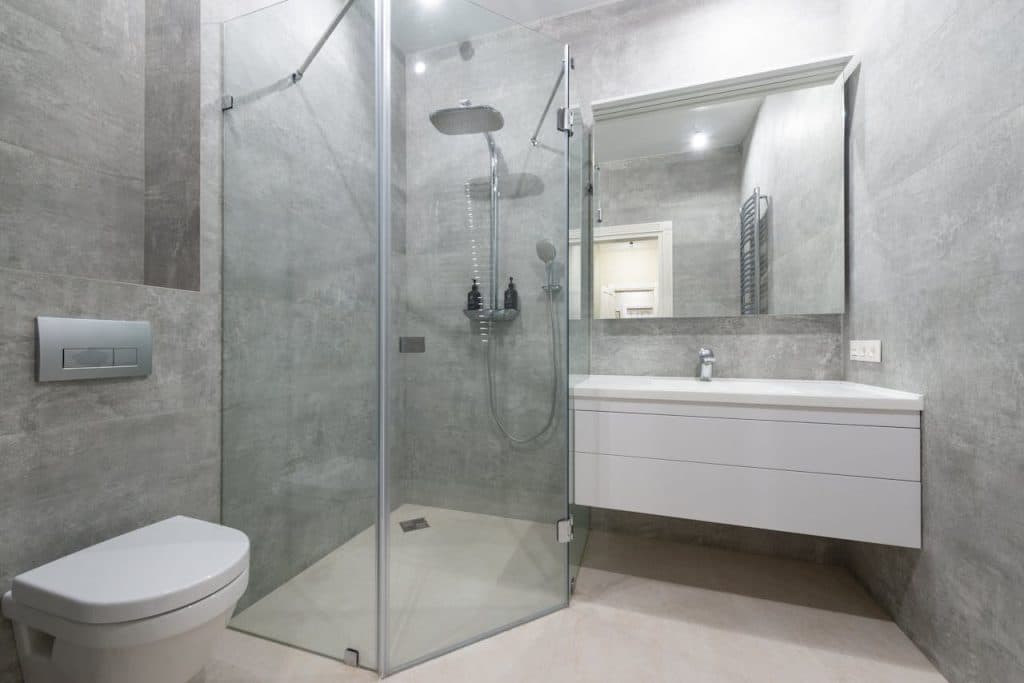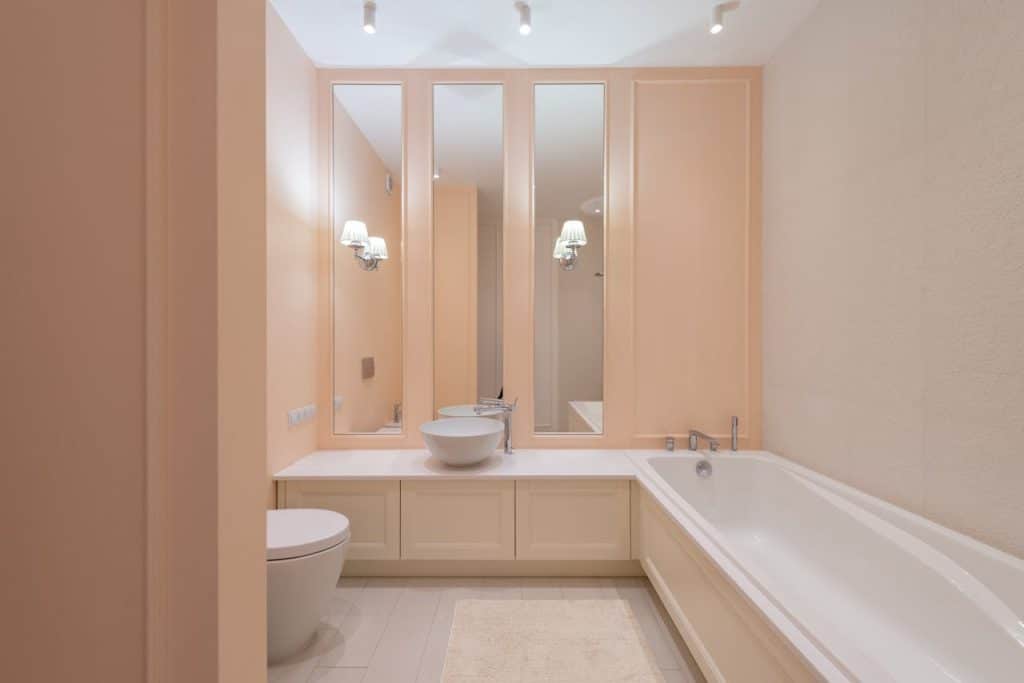A faulty toilet might seem like a small inconvenience, but it can quietly drive up your water bill. Tiny drips from worn-out flappers or loose seals often go unnoticed, yet they keep water running nonstop. Even a slow leak can add tens of cubic meters to your next bill. Many households live with these “silent leaks” for months before realizing the cause of their rising costs. Because water meters track every drop, those small, hidden issues quickly turn into big expenses. In this post, we’ll break down the most common causes of toilet leaks, the warning signs to watch for, and the best ways to repair or prevent them before they drain your wallet.
Key Takeaways
- Faulty toilets often cause hidden leaks that can significantly increase water bills even when there are no visible signs of water loss.
- Regular inspection and maintenance of critical toilet components such as the flapper seal, fill valve, tank bolts, and wax ring can save thousands of gallons of water and dollars on your water bill.
- Easy diagnostics, such as sound tests, dye tests, and water meter tests, can catch leaks early and keep water use down.
- Procrastinating on leaky toilets doesn’t just spike your utility bills. It causes widespread structural damage and growing repair bills as well.
- Fixing toilet leaks can save you hundreds, and it’s environmentally responsible, too.
- For more complicated problems or stubborn leaks, consulting Yorkshire Plumbing & Drain Services guarantees precise diagnosis, efficient repairs, and system reliability.

Why Your Toilet Leaks
Toilet leaks are a leading contributor to water waste in residences and workplaces everywhere. Even a slow toilet leak can squander hundreds of liters and inflate your water bill in just a month. Many plumbing issues go unnoticed because toilets can leak without any obvious indication. A jump in your monthly water bill often indicates a hidden leak, making periodic checking essential. Below are common causes and what to check for effective water usage control.
1. Flapper Seal
A bad flapper is the most common cause of a running toilet, which can lead to excessive water usage. The flapper, located at the bottom of the tank, opens to release water into the bowl when you flush. Over time, rubber flappers break down or become coated with minerals, preventing a good seal and allowing a water leak to occur even when the toilet is not in use. A quick dye test, using food coloring in the tank, can help confirm if water is leaking past the flapper. If the color appears in the bowl without flushing, it’s time to replace the flapper. Routine inspections and timely replacements are essential for effective home water management and preventing unnecessary water use.
2. Tank Fill Valve Assembly
The fill valve is crucial for maintaining the correct water level in the tank after each flush. If the fill valve is too high or defective, it can lead to a toilet leak, sending water into the overflow tube and causing it to run continuously, resulting in excessive water usage. This water waste can often go unnoticed, especially if the overflow is quiet. Regularly check for leaks around the fill valve and listen for hissing noises. If you discover a constant dribble, consider calling Yorkshire Plumbing & Drain Services to replace or repair the valve.
3. Tank Bolts
Loose or corroded tank bolts can allow a toilet leak to develop, causing water to seep out between the tank and bowl. As neat as this looks, checking tank bolts with a wrench during routine maintenance is crucial for controlling water usage. If you observe water pooling at the bottom of the tank, it’s important to replace or tighten the bolts promptly. Corrosion is an obvious indicator that the bolts should be replaced to prevent bigger leaks and potential water damage.
4. Toilet Sealing Ring
The wax ring seals the base of the toilet to the floor flange. If your toilet leaks, it’s probably due to a cracked or uneven wax ring, which can cause a potential leak that can leak water onto the floor and cause hidden damage. Always inspect the wax ring when completing any installation or if you see water around the toilet. Periodic inspections help control water usage by keeping the ring undamaged and reducing the possibility of big leaks or foundation issues down the road.
5. Broken Porcelain Surface
Small cracks in the tank or bowl can cause slow leaks, potentially leading to high water bills. These cracks can be hard to detect at times, but water marks or dampness near your toilet can indicate a water leak issue. Tracking fresh stains or changing water flow helps identify these cracks early, preventing excessive water usage and costly repairs.
The Silent Drain
Silent toilet leaks are the most overlooked source of water waste in homes and buildings worldwide. These plumbing issues often come with no warning bells, causing them to leak for weeks or months before detection. A tiny leak can silently push up water usage, leading to a significant increase in monthly bills. For those managing household budgets or facilities, monitoring water consumption is crucial. Silent drain room bills, even without lifestyle changes, might indicate a potential leak. Simple tests, such as adding food coloring to the tank to check for a visible leak, can help detect leaks before they escalate into more severe plumbing problems.
The Math
A dripping toilet can squander as much as 750 liters of water daily, contributing to excessive water usage. Certain toilets, in particular, when running, can waste up to 15,000 liters of water daily, leading to high water bills. For instance, one broken toilet that goes unnoticed can add $70 to $200 to a water bill each month, depending on local rates. If you notice that the tank takes over a minute to refill after a flush, this is a clear indication of a potential leak.
To effectively monitor water consumption, utilize a smart water meter to track your water meter readings. Once a week, compare the data from week to week. If usage suddenly spikes, this indicates a plumbing leak that requires immediate attention. Maintaining good records allows you to respond rapidly if costs increase.
The Pressure
Water pressure is crucial in the operation of toilets, as high pressure can stress seals and valves, increasing the likelihood of a toilet leak. If you experience fluctuations in water pressure, such as sluggish fills or abrupt gushes, it may indicate plumbing issues that require immediate attention. By adjusting pressure at the main valve, you can help control excessive water usage and avoid unnecessary wear or leaks, which can lead to a significant increase in your water bill.
The Damage
Leaks do more than waste water; they can lead to significant structural damage, affecting floors, subfloors, and the overall building integrity. Long-term, these unnoticed water consumption issues can erode pipes and fixtures, resulting in costly plumbing repairs. Additionally, mold growth from chronic leaks poses health risks, impacting indoor air quality and leading to high water bills.
Damage Type | Estimated Cost (USD) |
Floor repair | $500-$3,000 |
Mold remediation | $1,000-$6,000 |
Pipe replacement | $300-$2,000 |
Subfloor rebuild | $2,000-$10,000 |
How To Find Leaks
Toilets are a primary cause of excessive water usage, accounting for approximately 25% of household water consumption. Even if a toilet leak isn’t obvious, broken toilets can leak as much as 200 gallons per day, and phantom leaks can go as high as 300 gallons a day. Catching these leaks early can save on high water bills. Detecting leaks requires simple checks and continuous vigilance.
- Listening for strange or persistent noises in toilet tanks
- Performing dye or color tests in the toilet tank
- Checking the water meter for unexplained changes
- Inspecting the area around toilets and plumbing fixtures
- Reviewing water usage history for sudden increases
- Go check your yard for damp spots if the toilet isn’t it.
The Sound Test
The sound test begins with a simple premise: hear if any hissing or running water is coming from the toilet, even if it hasn’t been used recently. Odd noises frequently indicate a leak, typically from the fill valve or flapper. Flush the toilet and then stand quietly by and listen for noises that continue after the tank should be full. If you hear a constant hiss, then water is probably leaking somewhere inside the tank.
Finding the actual leak can be hard. Listen closely along the tank’s edges and in between the tank and bowl for the loudest point. More precise metering tools, like electronic leak detectors, are available to track down leaks. These tools are particularly useful in multi-toilet places or complicated plumbing configurations.
The Color Test
Color tests are an easy way to find leaks. Put a couple of drops of food coloring or a dye tablet into your toilet tank and leave it for at least 30 minutes without flushing. If any color shows up in your bowl, you’re probably leaking the flapper seal. This test is easy to repeat over time, making it a reliable part of routine maintenance.
Conducting this test routinely gets leaks out in the open early, before they waste water or cause inflated bills. It’s a great tool to keep an eye on the flapper and tank seals’ health.
The Meter Test
Reading the water meter can help find leaks that are more difficult to locate. Record your meter reading and then don’t use any water for at least ten minutes. If the meter changes or if the flow indicator spins or blinks, water is leaking somewhere. This works great to verify a suspected leak when no water is visibly leaking inside.
Taking readings at regular intervals enables you to catch water use trends. If the toilet isn’t the culprit, check your yard for wet patches that may indicate a buried plumbing leak.

Beyond The Obvious Signs
Beyond the obvious signs, a malfunctioning toilet frequently conceals its effect, often leading to a significant increase in your water usage. Most leaks don’t exhibit obvious puddles or stains; instead, they silently inflate your water bill and squander massive amounts of water. A leaking toilet alone can waste as much as 760 liters daily, enough to fill multiple bathtubs. The amount of waste is mind-boggling, with global household leaks contributing to excessive water usage, comparable to the consumption of some of the world’s biggest cities combined. It’s about more than just the obvious signs; it’s about gaining insight into preventing your financial and environmental loss.
Phantom Flushes
Phantom flushes occur when your toilet refills itself when no one is there, often due to a worn flapper or an aging fill valve. You think you hear the tank refill, like somebody flushed, but there’s no one in the bathroom. Over time, these unnoticed water consumption issues can squander thousands of liters, leading to excessive water usage. Repairing the flapper or the fill valve can stop this water waste immediately and help control your high water bill.
Constant Trickling
There’s nothing normal about the sound of water dribbling into the bowl or tank, as this often indicates a toilet leak. Such leaks can stem from a broken flapper, fill valve, or overflow tube. It’s crucial to listen closely when the bathroom is silent. If you hear this noise, check the tank’s water level for any signs of a visible leak. To test for a leak, drop a few drops of food coloring in the tank and wait. If the color shows in the bowl within an hour, you’re experiencing a leak. Replacing broken parts promptly helps control water usage and saves money.
Weak Flushing
Weak flushes often indicate a potential leak within the toilet’s internal tank or drain system. Blockages or worn components can weaken the flush, causing unnecessary water usage with every bathroom trip. Even minor issues, such as mineral buildup or a loose chain, can lead to significant water waste. Addressing these plumbing issues keeps the toilet efficient and reduces overall water consumption.
Water Bill Spikes
- Sudden, unexplained increases in monthly water usage.
- Noticeable differences compared to the same month last year.
- Charges that don’t align with household habits or recent shifts.
- Continued high bills even after cutting back on other water usage.
Look for any trend from month to month in your bills and compare them to previous data. If you see a jump in your water usage, check your toilets and plumbing immediately. Fast action can prevent a toilet leak before it drains both your wallet and your home.
The Cost Of Waiting
Letting toilet leaks go unrepaired can lead to higher water bills and significant water waste, adding marginal damage and additional risk to your home. Sure, your toilet’s broken, but it’s not that big of a deal, right? WRONG! A tiny leak can waste as much as 760 liters (200 gallons) of water a day or more than 26,000 liters (close to 7,000 gallons) every month! This quiet drain affects not only your monthly budget but also the broader environment, so it is imperative to act quickly.
Repair Vs. Waste
Balancing the price of an easy fix with the cost of wasting water. Water is approximately $0.002 per gallon, which is as little as $0.0005 per liter on average, so 200 gallons lost a day can add roughly $12 or more, depending on local rates, to your monthly bill. On an annual basis, that’s $144, which is money lost with no value added. After all, even a small leak, if ignored, can snowball into a significant drain on your finances.
If you look at the unit cost of repairing a leaking toilet, usually way less than a year of wasted water, the savings become obvious. By repairing promptly, you avoid additional water waste and repeated expenses, leaving a budget for other things. A lot of people underestimate how fast these losses stack up. The math is pretty compelling.
The Structural Damage
Constant leaks do more than affect your water bill. They increase the risk of concealed and expensive damage to your home. Water leaking from a faulty toilet can infiltrate into floors or walls, compromising your home’s structural integrity over time. Water damage indicators like warped tiles, peeling paint, or mold tend to hide in the shadows until renovation is inevitable and costly.
Turning a blind eye to small leaks for extended periods can lead to substantially bigger expenses down the road, not just for plumbing but for entire renovations. It’s better to do it sooner, plugging the leak before it becomes an elephantine tangle of leaks.
Environmental Impact
Water wasted from leaks, such as a toilet leak or a dripping faucet, unnecessarily strains local water supplies and infrastructure. Saving water through leak repair is sustainable and helps protect this vital resource. Small fixes don’t just save cash, they shrink your individual eco-footprint and contribute to effective home water management.
Time To Call A Plumber
A broken toilet, if left unattended, can lead to a significant amount of water waste, directly impacting your water bill. While some plumbing issues may be straightforward, others necessitate the expertise of Yorkshire Plumbing & Drain Services to control excessive water usage and prevent unnoticed leaks.
Identify Situations Where Professional Plumbing Services Are Necessary.
A minor toilet leak might not feel critical, but it can lead to significant water waste, potentially wasting hundreds of gallons over weeks or months. If you notice water on the floor around the base of the toilet or hear trickling sounds well after a flush, it’s time to call Yorkshire Plumbing & Drain Services. A bad flapper, the rubber part that seals the flush valve, is a typical culprit. If you’ve tried repairing or replacing the flapper and the issue persists, professional help is necessary. Additionally, if your tank’s refill time exceeds a minute, this can indicate a hidden leak or valve problem.
Recognize The Signs That Indicate The Need For Expert Assistance With Leaks.
A minor toilet leak might not feel critical, but it can lead to significant water waste, potentially wasting hundreds of gallons over weeks or months. If you notice water on the floor around the base of the toilet or hear trickling sounds well after a flush, it’s time to call in a plumbing service. A bad flapper, the rubber part that seals the flush valve, is a typical culprit. If you’ve tried repairing or replacing the flapper and the issue persists, professional help is necessary. Additionally, if your tank’s refill time exceeds a minute, this can indicate a hidden leak or valve problem.
Schedule Regular Inspections With A Professional Plumber To Maintain Your System.
Regular inspections from Yorkshire Plumbing & Drain Services can detect minor plumbing issues before they escalate into significant problems. An annual checkup can notice deterioration in valves, flappers, or seals that you might overlook, which is crucial in communal living or older buildings where plumbing is more stressed.
Understand The Value Of Timely Repairs From Experienced Plumbers To Prevent Further Issues.
A running toilet can be a significant cause of high water bills, potentially increasing your monthly bill by $70 to $200 and leading to unnecessary water use of 200 to 4,000 gallons a day. Utilizing Yorkshire Plumbing & Drain Services for prompt, professional repair is crucial for effective water management and to control ongoing leak detection, as postponing repairs could lead to more expensive plumbing issues later.
Final Remarks
A broken toilet can jack up your water bill. Small leaks can double a water bill in one month. Even a slow drip stacks up every day. A lot of leaks hide, so bills spike without notice. A little check usually reveals the issue. Dye tablets, food color, or just peeking in the bowl do the trick. Replacing just one small part will save you a high bill. Yorkshire Plumbing & Drain Services intervenes for major fixes or if the leak persists. Water isn’t free, so sealing leaks saves you money and the environment. To save money, inspect toilets frequently and repair leaks immediately. Pass these tips along to friends or neighbors who may not realize what a little leak can do to your bill.
Frequently Asked Questions
1. How Can A Faulty Toilet Increase My Water Bill?
A defective toilet can cause a significant amount of water waste, leading to high water bills due to unnoticed water consumption.
2. What Are The Most Common Signs Of A Leaking Toilet?
Typical indicators of a toilet leak include running water noises, water stains near the foot of the toilet, and a flush handle that requires jiggling, which can lead to excessive water usage.
3. How Can I Check If My Toilet Is Leaking?
Add a few drops of food coloring to the toilet tank to check for a potential leak. Wait 10 to 15 minutes. If the color shows up in the bowl unflushed, you have a toilet leak.
4. Does A Small Toilet Leak Really Make A Big Difference?
Yes, even a slow toilet leak can squander many liters every day, leading to unnoticed water consumption. Over the course of a month, this can add up to a significant increase in your high water bill.
5. What Are The Long-Term Risks Of Ignoring A Toilet Leak?
Ignoring a toilet leak can lead to increased water bills and unnoticed water consumption, so tackling leaks immediately saves you money and prevents potential water damage and mold.
Toilet Repair In Santa Rosa – Fast, Reliable, And Professional Service
When your toilet stops working properly, quick and skilled repair makes all the difference. Whether it’s constantly running, leaking at the base, or won’t flush at all, Yorkshire Plumbing provides fast, dependable toilet repair services throughout Santa Rosa.
Our licensed plumbers handle every kind of toilet problem, from simple part replacements to complex clogs and full fixture repairs. Using advanced diagnostic tools and proven methods, we find the issue quickly and fix it right the first time, saving you water, money, and stress.
With nearly a decade of experience serving Sonoma County, we’ve earned the trust of homeowners who value honest communication, quality workmanship, and lasting results. We don’t just patch problems; we make sure your toilet works efficiently for years to come.
From emergency toilet repairs to full replacements, Yorkshire Plumbing is the family-owned team Santa Rosa residents rely on for expert plumbing service. Call or message us today for a free estimate. Same-day appointments are often available, and we’re always ready for urgent calls.
Disclaimer
The information provided on this website is for general informational and educational purposes only and is not intended as professional plumbing or construction advice. You should consult with a licensed plumber or qualified contractor for guidance specific to your home or situation. Do not rely solely on the content of this site to make decisions about plumbing repairs, installations, or maintenance. While we strive to keep the information current and accurate, it may not reflect the most recent industry standards or code requirements. Yorkshire Plumbing & Drain Services disclaims all liability for any actions taken or not taken based on the content of this site, to the fullest extent permitted by law.






